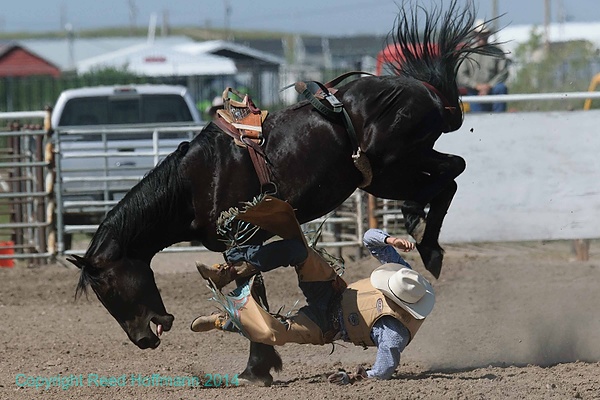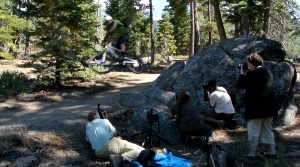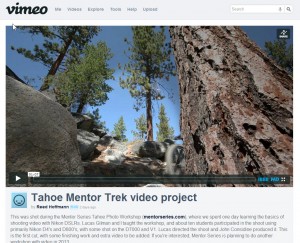Last weekend I was in Lake Tahoe to teach another Popular Photography Mentor Series workshop. This one had a bit of a twist to it – we were going to teach video too. The Nikon D90 was the first DSLR to offer video, and now it’s a given that any new DSLR will have that capability. And that can be quite impressive. TV shows, commercials, music videos and movies are all being shot on DSLRs today. And I’ve been shooting video with them since the start too. But this was the first workshop I’ve taught where that was part of the schedule.
There are some big advantages to shooting video with a DSLR. Some drawbacks too. The advantages mostly come from the fact that these cameras have a very large sensor in comparison to what’s found in video
cameras. Even professional, expensive video cameras. That large sensor means two things – you get much better quality in low light, and you have much more control over depth of field. The downsides are that the autofocus isn’t very good (can’t follow action well), zoom is manual (and thus clunky) and image stabilization isn’t as good as traditional video cameras.
For this workshop I was paired with Lucas Gilman, who I first met about ten years ago when he was working at the Jackson, Wyoming newspaper while pursuing skiing and adventure photography. Since then he’s left journalism and created a great business for himself shooting extreme sports. Since many of his clients want video too, he’s learned it and doing some amazing work.
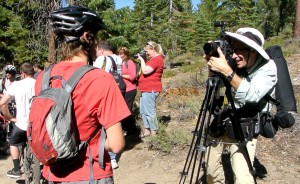
Using a Manfrotto fluid head video tripod for stability, and shooting my Nikkor 85mm f/1.8 wide open (at f/1.8) thanks to a Singh Ray Variable Neutral Density filter. Photo copyright Reed Hoffmann.
As an introduction to video, we took the three-day workshop and devoted most of the first day (Friday) to video. The first part of the morning was spent demonstrating good video techniques and going over camera settings. We had some Nikon D4’s and D800’s on loan from Nikon, as well as an assortment of lenses. We made sure everyone was set to “Full HD,” meaning 1080p, and 24 fps. It’s important when shooting several cameras that the video from them match up in settings like this as well as white balance (we used the default Daylight setting) and exposure. And we showed how to adjust and set focus, and shift exposure (lighter or darker). Finally, Manfrotto had shipped in a bunch of video tripods and monopods (all with fluid heads, very important when shooting video), and a new shoulder rig. Shaky video is bad video, and the gear from Manfrotto would make sure we had steady video.
By late morning we were out on the mountain, ready to shoot. We’d
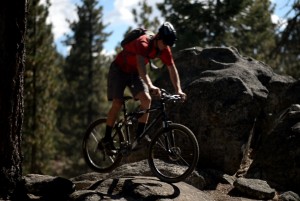
Using the neutral density filter for this shot with the 85mm I was able to shoot nearly wide open, at f/2.2. That kept the focus on the rock the biker was coming over but made the background nicely out of focus. The blur comes from shooting video at 24 frames per second, which requires a shutter speed of 1/50. When watching the video you don’t see the blur. Photo copyright Reed Hoffmann.
hired five mountain bikers to ride the trails, and had a permit allowing us to shoot there. With any video, it’s important to have a story. In this case we wanted to create a short, fast video showing the thrill of mountain biking, so we talked about the different shots we’d need. That would include the riders getting ready, riding, and a closing. We’d need tight shots, wide shots, pans, locked-down shots (camera doesn’t move while the action goes by) and wanted to make sure we had a variety of angles. Lucas had also brought a device called a “slider,” which you mount a camera to and then slide it along, to add smooth camera movement.
Breaking the group of about ten people into two teams, we worked out who was shooting what, making sure they had good angles and wouldn’t have other shooters in their frame. After about ninety-minutes of filming, we took a break for lunch and discussed what we’d shot over pizza. Then it was back to the mountain for another two hours’ shooting. When we finished in the late afternoon, John Considine stopped by to meet us and collect our memory cards. John’s a local video editor, and would be responsible for assembling
the footage into something worth watching.
The rest of the workshop we did our usual thing, shooting stills. We took a sunset dinner cruise on the lake, rode a gondola to the top of the mountain to hike and shoot, met a couple at the beach to take lifestyle pictures of them and their kayaks, went out for a sunrise shoot over Emerald Bay and did critiques. You can see a few of my photos from those shoots at my “Past Workshops” page..
John returned Saturday afternoon to give us a two-hour demonstration on how he puts a video project together. From download to organization to storyline to using Adobe Premiere Pro, he showed us the basics and made what seemed overwhelming at first into a manageable job. And we learned that there are inexpensive programs (under $100) that are great for getting started, as well as Nikon’s free View NX 2 software (which has a basic movie editor built in).
At the closing of the workshop late Sunday morning, John returned one more time to show us his initial cut of the 67-second video. We were blown away. He’d added some graphics, bought a soundtrack to use in it, and cut together dozens of clips of what we’d shot to make a fast and fun video. There’s more he wants to do with it, but you can check out the original version on my Vimeo Workshops channel.
The group had a great time at the workshop, and learned a lot shooting the video. I’m still a stills guy at heart, but realize some things are better as videos, and many clients are asking for this now. If you’re interested in learning more, Nikon’s running a two-day hands-on workshop (www.NikonSchool.com). And my guess is that the Mentor Series will do another. It’s a brave new video world!

